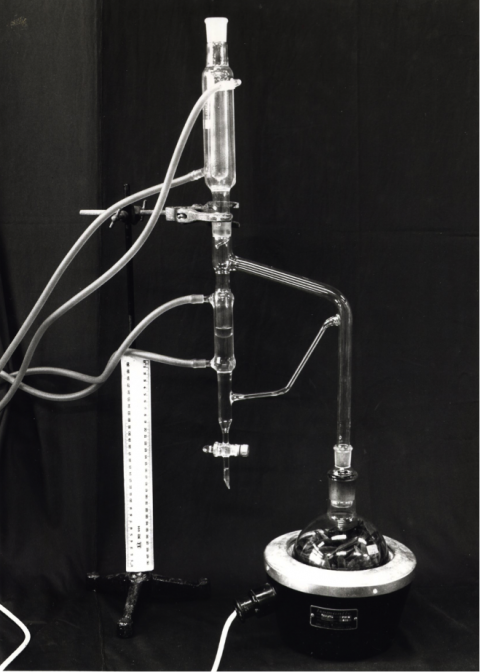The oil profiles may be of use to people interested in developing commercial productions of oil or for ‘cottage industry’ type production. It may be that the leaf oils could be used as a by-product when another part of the tree is being used commercially.
The analyses have been made over a 20-year period, as samples were collected. Some species were collected from widely spaced localities and were analysed to check if location caused any variation in the oils (it sometimes did). Hence, there can be multiple collections of the same species, however different collections are included here only if they gave significantly different oil analyses.
The oils were all obtained by steam distillation with co-hobation, mostly in an apparatus as shown on the right. Distillation times varied according to what type of oil occurred in the species but was a minimum of 3 hours for oils containing only monoterpenes, principally hydrocarbons or 1,8-cineole, and up to 15 hours for oils that contained large amounts of sesquiterpene alcohols.
The oils were analysed by both gas–liquid chromatography (GLC) and gas chromatography/mass spectrometry (GC/MS). Mostly they were analysed on polar GLC columns (DB-Wax, BP-20) but some were also analysed on a non-polar column (DB-5, BP-5). Over the years, several mass spectrometers were used: an MS12 magnetic sector mass spectrometer coupled to a Shimadzu GC6-AMP gas chromatograph; a Hewlett Packard 5890 gas chromatograph coupled to a VG Quattro quadrupole mass spectrometer; and a Shimadzu QP 5000 GC/MS system. In the oil profile tables, the components are reported in the order that they eluted from a polar GLC column.



